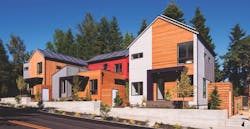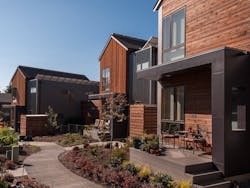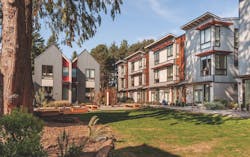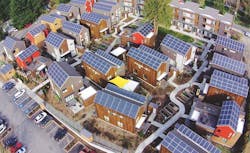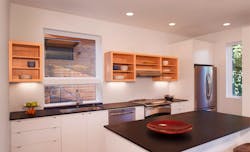Just 35 minutes by ferry from Seattle, Bainbridge Island, Wash., is a beautiful place to live. But with its high land costs (not to mention the cost of living), it’s a challenging location for new development.
Thanks to a pilot green-building program by the city of Bainbridge; an investor group (Asani) committed to sustainable development; and the Bainbridge Island design team of Jonathan Davis, Davis Studio Architecture + Design, and Bruce Anderson of Cutler Anderson Architects, Grow is coming out of the ground. The 8-acre, 141-unit community is a five-minute walk to the small urban village of Winslow and a 10-minute walk to the ferry. Since it’s so close to Winslow, Davis says, “we didn’t need to provide anything other than a residential fabric.”
Grow is the largest solar community in Washington state: Every home in phase one is powered by photovoltaics. All the homes are net-zero energy. There are community gardens, pea patches for children, and a community-led, car-sharing program.
But there are no garages, rear-loaded or otherwise. Instead, resident parking is separated from the homes, which encourages social interaction. Eliminating garages also opened up space for the community gardens which, says Asani’s Greg Lotakis, are “the biggest binder within the community. They draw the most activity.”
Grow includes detached homes; rental apartments; condominiums; and townhomes. Phase one, with 23 single-family homes and 20 apartments, is sold out. More than half of the buyers are from Bainbridge Island, including downsizers and first-time buyers.
Phase-one prices ranged from the low $300,000s up to $500,000, Lotakis says. Phase-two prices are higher; however, the rental apartments are affordable to those who want to live as well as work on the island.
Grow has a cohesive architectural style that Davis calls modern Northwest vernacular. “The island doesn’t have a particular style per se, so we decided to do something a little different to make the community stand out.”
Read more about Traditional Neighborhood Development in Professional Builder's feature article, "Traditional Neighborhood Development: Learning From the Past, Present, and Future."
